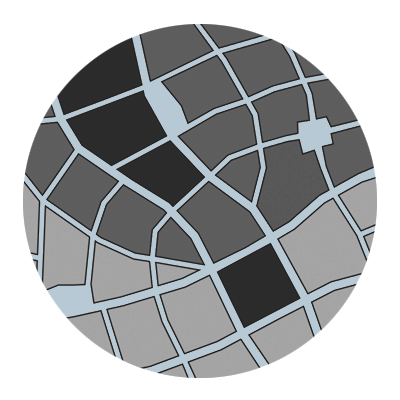A Placemaking Journal
A Municipal Planner’s Call to Arms (and Legs, Hearts and Lungs)
The obesity epidemic isn’t really “news” anymore (thank you, Jamie Oliver’s Food Revolution) yet when I question my friends who work outside the fields of design and planning on why Americans are so fat, they tie everything back to poor food choices. But what about exercise? They reply that if you want to exercise, just find yourself a park or a gym. No worries.
So, although we know that there is an obesity “problem,” one with significant national impacts, the average American still is not aware that it is, in many ways, a design problem. A result of a built environment that has been constructed over the past 50 years with one singular purpose – move more cars faster.
While Jamie Oliver and Michelle Obama for that matter might convince us to eat a vegetable, it is not so easy to grow a sidewalk in your front yard, much less connect it to a useful destination.
That’s our job, those of us who plan, fund, design and construct the built environment. And let’s throw in our bosses (or elected officials) too, just for fun.
I’d like to suggest that if there was such a thing as designer malpractice we would be in a lot of trouble right now. We have created a land use and transportation system that actually prevents a healthy lifestyle. Ironic, considering the preamble of most zoning ordinances indicates a goal of promoting the “health, safety and general welfare” of the inhabitants of a city. Back in the 1900’s we were arm in arm with our friends in public health fighting infectious diseases—separating land uses, establishing systems to clean water and get our waste carried away—but somewhere along the way we transformed into little worker cogs focused on specific issues like the perfect bridge design or the exact number of malaria cases.
We forgot to look at the big picture or question our reasons for building an 8 lane road.
I thought I was improving quality of life, not setting people up for cardiovascular disease. But since we haven’t managed to design and build our way out of traffic congestion, I haven’t even provided anyone a way to get to the doctor quickly. If only we knew the way out of this downward spiral…
I know! We can just create a commission, model policies, walkability checklists and cost calculators to show us how to plan and design our way out of obesity.
No need. Amazingly, all of these resources are already readily available. Right now.

I hear what some of you are saying: “This isn’t a professional problem, it’s the people! They just need to put down the Big Mac.” But some of our design friends in the environmental field have decided that expecting humans to act, well, less human isn’t a reasonable solution.
“As long as human beings are regarded as ‘bad,’ zero is a good goal. But to be less bad is to accept things as they are, to believe that poorly designed, dishonorable, destructive systems are the best humans can do.” [Cradle to Cradle, William McDonough & Michael Braungart]
If the goal is for each person to work against existing systems to eat better and exercise more, we’ve failed ourselves and our profession. Humans like consuming new things, connecting to others and experiencing a diversity of environments. Why don’t we design our physical environment to celebrate our human nature (like Bank of America’s “Keep the Change” program) and allow us a fighting chance at being healthy? Do we wonder why connecting through the internet has become so popular? What have we done as designers to make it easy to interact in real life?

We’ve created an endless monoculture of highways and strip malls that could all be labeled “Anywhere, USA.” It’s no surprise then that residents choose instead to stay inside and explore the virtual world while we design another soulless building and single mode road.
Every time a traffic engineer tells me trees are not allowed in the “auto recovery zone” (a.k.a. sidewalk) or a planner decides to use a population projection model that results in a 20 lane highway, I start to wonder if we are in the midst of a mental health epidemic as well. When did we start caring more about cars than people?
If we have the knowledge we need to design healthy environments and we are going to count on humans acting like humans, then what’s missing? Leadership, from us, the people responsible for the design and condition of the built environment. Say it with me: We are not cogs in a machine made to follow a manual with a goal at the top that says “move more cars faster and then store them.” We are professionals that have the sacred responsibility and opportunity for creating healthy places. It is not hard to build a healthy environment (here is a handy checklist!). It’s hard to stay curious about your work. It’s even harder to step outside of your bubble and connect with colleagues in different fields of design and public health. It’s hardest of all to have the courage to tell your co-workers, bosses and the public that you refuse to design, enable or build projects that will perpetuate an unhealthy environment.
We have to lead this change. We are actually the only ones who have the technical skills and legal authority to build healthier cities. It’s simple. We merely change the operating paradigm we’ve used for the past 50 years from cars to people, tomorrow. Try not to feel overwhelmed. As a starting point and shout out to our medical friends, I suggest you take the Hippocratic Oath to, first and foremost, “do no harm.”
–Amanda Thompson
Amanda Thompson is the Planning Director for the City of Decatur, Georgia, the first city in the United States to perform a Health Impact Assessment in development of its transportation plan.





